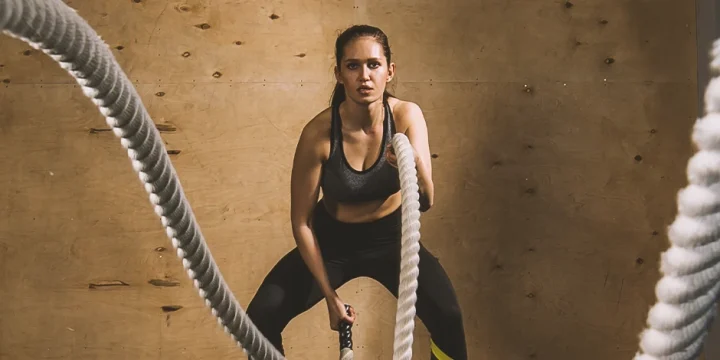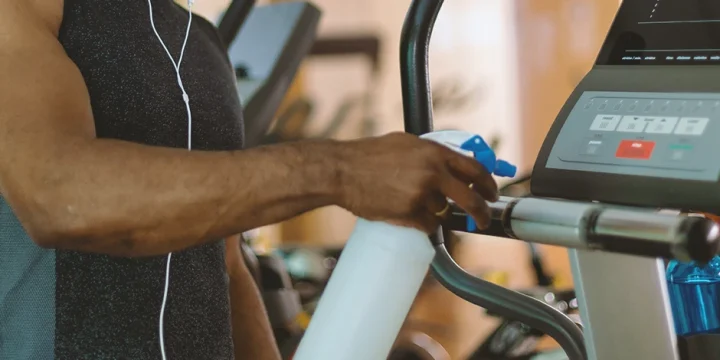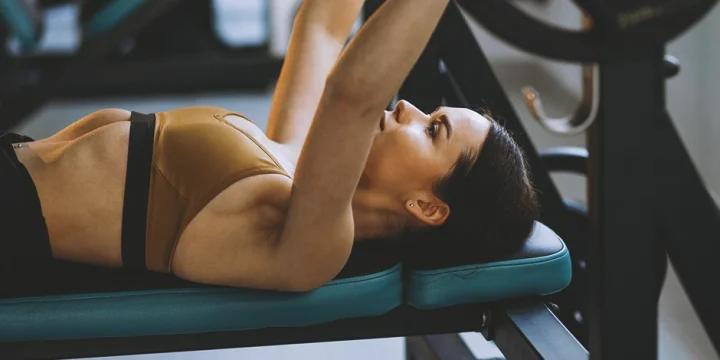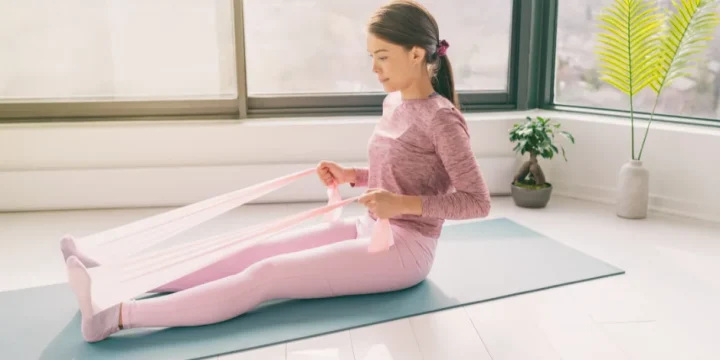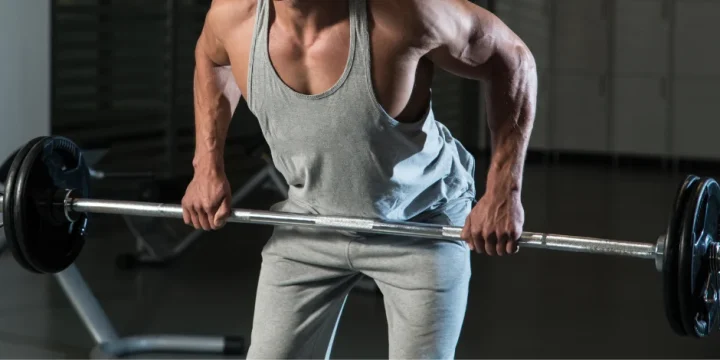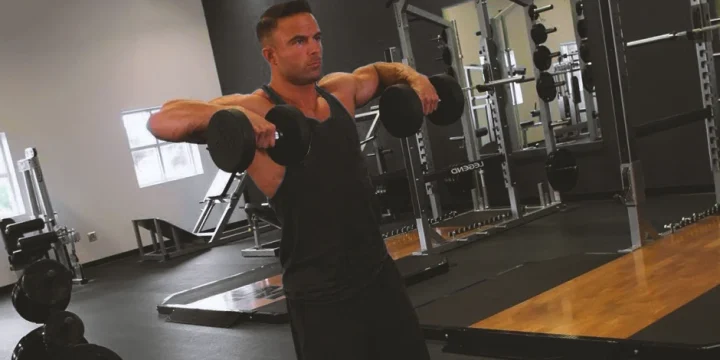Kroc rows are excellent heavy dumbbell-pulling variations used to develop power and strength in the upper back muscles.
It is crucial to perform Kroc rows in your back training if you are an athlete, competitive bodybuilder, or powerlifter looking to develop serious feet of strength.
Based on my experience as a certified personal trainer and 20-hour research, I pulled the most important information regarding the Kroc rows technique, its benefits, and variations you can use.
After reading the article, you will know how to perform Kroc rows, their benefits, and the best alternatives you can use in your back training to grow traps and lats.
Quick Summary
- Kroc Rows, invented by Matthew Kroczaleski, are distinguished by their use of the body's momentum and a smaller range of motion at the shoulder joint, allowing for lifting heavier weights.
- To effectively perform Kroc Rows and develop upper back strength, use heavy weights and focus on unilateral rowing targeting muscles like the trapezius, posterior deltoid, and latissimus dorsi.
- Research in the Journal of Strength and Conditioning Research highlights that Kroc Rows activate additional muscles like hip extensors, including glutes, hams, and erector spinae, for a full-body workout.
- In my professional opinion as a senior coach, incorporating Kroc Rows into your training regimen is a powerful way to build a strong, muscular back and correct muscle imbalances.
What Is the Kroc Row?
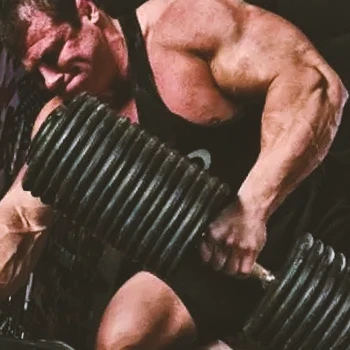
The Kroc row is a unilateral rowing exercise targeting the upper body muscles such as the trapezius, posterior deltoid, and latissimus dorsi.
Kroc rows were invented by professional powerlifter and bodybuilder Matthew Kroczaleski, looking for a way to perform heavy-weight rows without injuring himself and still experiencing the hypertrophy and strength benefits.
This is how the Kroc rows were born, and when performing the same, how much weight you use is the most important thing.
The smaller range of motion at the shoulder joint and compensatory movements of the whole body will allow you to lift more weights.
There is no point in performing high-reps or small-weight Kroc rows because the nature of the exercise is to use as much weight as possible to help develop power and strength.
"Did you know you can increase back strength by doing back rows? Of course, you did. However, did you know that a stronger back is at the root of nearly every “strength” movement in strength, power, and fitness sports?"
- Mike Dewar, Certified Personal Trainer
How to Do the Kroc Row

To execute Kroc rows correctly, you can use any amount of weight, but there is little to no point in using smaller weights, based on International Journal of Environmental Research and Public Health research, because this lift aims to build explosive strength and develop hypertrophy [1].
However, if you are doing Kroc rows for the first time, I would advise using a smaller weight to get the feeling of performing the technique correctly and without injuries.
Here is how to do the Kroc rows:
- Pick a dumbbell of the appropriate weight. If you are doing them for the first time, pick 40% of your one rep max, and if you are more experienced, feel free to pick more than 87.5% of your 1 rep max.
- Place the flat-weight bench or ply box at the height of your hips.
- Place the dumbbell on the ground in front of the plyo box and put your non-working arm (in this instance, left) on the plyo box.
- Put your left leg in front and your right leg back so your right knee is almost fully extended. This is the three-point starting position of the Kroc row.
- Start the exercise by picking up the heavy dumbbell from the floor with your right hand.
- Start rowing the dumbbell with your right arm towards your hips. When you start to row, use the power of your whole body to move the dumbbell faster and closer to your body.
- Pulling the dumbbell with your right hand, compensate with your body by leaning backward and then explosively running your body towards the dumbbell to shorten the distance it needs to travel until the end range of motion.
- Immediately bring the dumbbell back to the starting position and repeat for no more than 5 reps if you are doing the set for building strength and power.
Form Considerations When Doing the Kroc Row
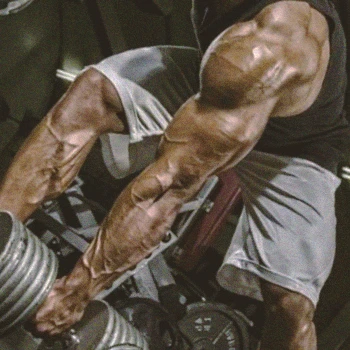
While Kroc rows don't have a strict form, safety is key.
Therefore:
- Keep your back straight—align it with your head. A bent spine, as warned by a 2020 Cureus journal study, can lead to serious back issues [2].
- Avoid doing Kroc rows last in your workout session—when tired, you're more likely to compromise your form, risking injury [3].
- Don't lock your back leg straight—a slightly bent knee protects your knee ligaments from strain.
- Focus on the mind-muscle connection—consciously engaging the targeted muscles—lats, traps, and delts—can significantly increase the effectiveness of the exercise.
Remember, it's all about lifting smart, not just heavy.
Kroc Row Muscles Worked
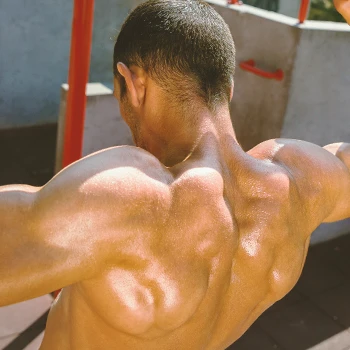
Kroc rows mainly work your:
- Latissimus dorsi
- Trapezius
- Posterior deltoids
Unlike regular unilateral pulls, Kroc rows involve using your body's momentum.
This engages more muscles and joints, making it a full-body effort. Research in the Journal of Strength and Conditioning Research shows that using your torso in this lift activates your hip extensors—that's your glutes, hams, and erector spinae [4].
These muscles kick in to power the horizontal pull. Plus, your shoulder stabilizers in both arms work overtime to keep you steady during the pull.
Benefits of Kroc Row

Here are the most notable benefits of Kroc rows:
Upper Back Muscle Development
Through my training sessions at Total Shape, I've seen firsthand how Kroc rows, especially with heavy weights, effectively bulk up upper back muscles including traps, lats, and delts.
Remember, for ongoing muscle growth, keep upping your game with more reps, sets, or intensity, following the principle of progressive overload [5].
Boosts Grip Strength
Lifting heavy in Kroc rows not only works your back but also increases your grip strength. The heavier the weight, the harder your forearms work to maintain grip and balance.
Corrects Strength Imbalances
Ideal for fixing muscle imbalances, Kroc rows are a go-to for unilateral training. For example, to address issues like scoliosis, a therapist might recommend strengthening one side of your body [6]. Unilateral exercises like Kroc rows can help even out these imbalances, improving posture and shoulder alignment.
Enhances Spine and Core Strength
Doing Kroc rows with heavy weights demands solid core and abdominal muscle engagement—think rectus abdominis and obliques—to keep your spine stable and injury-free. Plus, they work your hip extensors, which are crucial for the rowing motion.
Read More:
Kroc Row Programming

Drawing from my experience as a senior coach, I recommend these guidelines for effectively incorporating Kroc rows into your workout program:
- Strength: To program Kroc rows for strength, you must use strength training principles such as progressive overload and advised sets, reps, rest intervals, and basic supercompensation principles. The range of reps you should aim for is between 1 and 5. The number of sets is not less than 4. Rest intervals should be set between 2 and 5 minutes.
- Power: To program for power, you must follow the same principles as for strength, but you should lift a slightly lighter weight and aim to move the dumbbell at the greatest velocity possible. The sets and rest intervals remain the same, but you shouldn’t perform more than 3 reps since everything above that isn’t as powerful and has enough velocity to evoke power effects.
You should allow up to 48 hours of rest for the same muscle group before hitting them with the new workout session.
"A big, strong back is a statement. Whether you want to look more muscular, perform better under the barbell, or simply feel better on a day-to-day basis, you need to train your back, and you need to do it properly."
- Austin Current, Certified Personal Trainer
Kroc Row Alternatives

Here are the best Kroc row alternatives.
Single-Arm Dumbbell Bent Over Rows
These are essentially very similar to Kroc rows, but they don’t feature the compensatory movement for the torso.
How to Perform a Single-Arm Dumbbell Bent Over Rows
- Pick a dumbbell of appropriate weight so you can perform up to 8 reps without resting.
- Place a plyo box as high as your hips in front of you.
- Place the dumbbell in front of the box and put your left arm on the plyo box to have a stable base.
- Your right foot should be slightly extended backward and your left foot should be closer to the box.
- Start the exercise by lifting the dumbbell and rowing it towards your right hip.
- When the dumbbell reaches the level of your hips, hold that position for one second and reverse the motion to return to the starting position.
- Repeat for 8 reps, 4 sets, and rest for 3 minutes between the sets.
Related: Best Dumbbell Exercises: Workout Routine to Build Muscle
Seated Twisting Cable Row
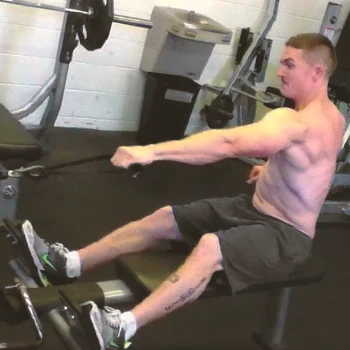
Seated twisting cable rows are excellent for hitting all three planes of motion, including the transverse plane.
How to Perform Seated Twisting Cable Rows
- Load your favorite cable machine with the appropriate weight to perform at least 6 rows with one hand.
- Sit at the cable machine and attach the machine to your right hand.
- Start the exercise by pulling the cable towards your middle torso, slightly above your hips.
- When the cable approaches your stomach, twist your trunk on the right side and pull the handle.
- When you reach the end range of motion, reverse the motion to return to the starting position.
- Repeat for 6 reps with each hand, 3 sets, and rest for 2 minutes between each set.
Related Posts:
- Best Seated Cable Row Alternatives
- How to Do Cable Upright Row: Tips and Variations
- Best Cable Workouts For Bigger Back
Single-Arm Dead-Stop Row
The dead-stop row is a good alternative to save your grip strength.
This is useful if you have multiple pulling exercises, one after another, and you wish to have enough forearm strength for each.
How to Perform Single-Arm Dead-Stop Rows
- Pick the dumbbell of the appropriate weight so you can perform up to 8 reps.
- Use the same setup as for the first alternative exercise and assume the three-point starting position.
- Start the exercise by rowing the dumbbell towards your right hip.
- When the dumbbell reaches the level of your right hip, reverse the motion to return to the starting position.
- Put the dumbbell on the floor and repeat the whole process.
- Repeat for 8 reps, 4 sets, and rest for 90 seconds between the sets.
FAQs
Who Is the Inventor of Kroc Row?
The inventor of the Kroc rows is the bodybuilder and powerlifter named Mathew Kroczaleski. Jim Wandler, the powerlifter and inventor of the world-famous 5/3/1 training system, saw Mathewy perform a unique rowing variation, which later got named the Kroc rows.
What Is a 3 Point Row?
The three-point row is a single-arm dumbbell row variation that requires three holding points. Usually, you will use an adjustable incline bench, flat bench, a dumbbell rack, or a plyo box to put one hand on and the feet behind, acting as the three-point row system.
Are Dumbbell Rows Good?
Yes, dumbbell rows are good. Regular single-arm rows and bilateral Kroc rows are excellent upper-body strengthening exercises that induce hypertrophy for shoulder blades, posterior deltoids, trapezius, and latissimus dorsi muscles.
References:
- https://www.ncbi.nlm.nih.gov/pmc/articles/PMC6950543/
- https://www.ncbi.nlm.nih.gov/pmc/articles/PMC7417116/
- https://pubmed.ncbi.nlm.nih.gov/15571428/
- https://pubmed.ncbi.nlm.nih.gov/19197209/
- https://www.ncbi.nlm.nih.gov/pmc/articles/PMC4215195/
- https://www.ncbi.nlm.nih.gov/books/NBK69615/
About The Author
You May Also Like
